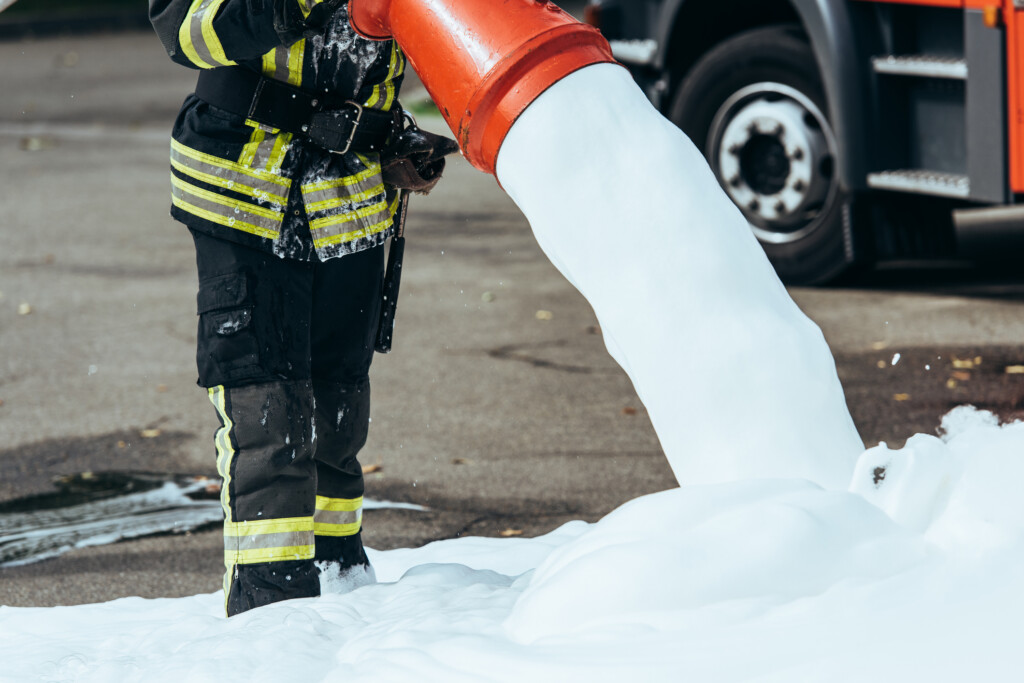Transport
Heatwaves challenge urban planning

In the future, we can expect more and longer heatwaves. This means rising death rates and more health problems if we don’t take action. Researchers are now looking for answers on how we can best prepare for the heat – and there’s no time to lose. Temperatures are already rising.
Prenumerera på Extrakts nyhetsbrev!
Läs mer
Håll dig uppdaterad! Få kunskapen, idéerna och de nya lösningarna för ett hållbart samhälle.
Personal data is stored only for the mailing of Extrakt newsletters and information related to Extrakt’s operations. You can cancel the newsletter at any time, which means you will no longer receive any emails from us
When we reach Christofer Åström, researcher at Umeå University, it has finally cooled off a bit after several days with temperatures above 30 degrees in many parts of the country. Many people had enjoyed the late summer on beaches and lawns, but there is a downside to the heat. The research is clear: mortality increases as temperatures rise.

“We see this all over the world. We also see an increase in morbidity, although it’s not as well studied,” Åström says.
In a new research project, he is investigating how municipalities and regions across Sweden manage heatwaves. The elderly are particularly vulnerable to the heat, along with people who have cardiovascular or respiratory diseases, such as asthma or chronic obstructive pulmonary disease (COPD).
“Through the project, we want to see what’s being done within elderly care. We hope we’ll be able to gather some good examples, as well as identify areas that need improvement. Many municipalities have made sure that cooled rooms are available in homes for the elderly on hot days, and they’ve helped the homes by providing portable air conditioners. It’s a good start but it needs to take place on more of an organisational level, with training and planning,” he says.
Warmest in the major cities
The most distress caused by heatwaves is in cities, because built-up areas generate extra heat. For example, Åström noted a heat-related mortality rate during the record-warm summer of 2018 that was clearly higher in Stockholm compared with the rest of the country.

The reason why cities are getting warmer is that buildings and streets store heat.
“This way, cities create their own weather,” says Jorge Amorim, research leader at the Swedish Meteorological and Hydrological Institute SMHI.
He is studying the effects of a warmer climate in major cities, and how municipalities are addressing the new challenges. In a project called Green Wave, he and his colleagues are delving into how parks and planted areas can help lower the temperature on hot summer days. They hope to give concrete advice on how large parks should be designed to provide optimal effects, and how close to each other different parks should be. The project will also draw attention to the negative side effects that trees and greenery can have if not planted in a carefully considered way.
“If you place trees along a central avenue, for example, it can restrict air flow. So, the trapped exhaust fumes don’t get released from the street level effectively,” he says.
Buildings built for the winter
As Amorim describes it, Swedish cities are at the forefront when it comes to providing space for parks and greenery. On the other hand, some work remains in terms of adapting buildings.
“Here in the Nordic countries, buildings are designed to retain heat during the winter. But they’re not very good at releasing heat during the summer,” he says.
To enable buildings to better cope with the summer heat, we might need to use other materials than what we use today. Another method is to allow trees to shade the buildings.
“The good thing about trees is that they lose their leaves in the autumn to allow the sun’s rays in during the winter when you want the heat,” Amorim says.
He thinks that there is more awareness around the problems related to more and longer heatwaves. Åsa Sjöström, director of the National Knowledge Centre for Climate Change Adaptation, shares this view.

“I think the summer of 2018 was a wake-up call. Before then, you could joke that a little more heat wouldn’t be so bad. But after that summer, it’s not so funny anymore. The reality of what long-lasting heatwaves can bring has hit us,” she says.
She notes that many municipalities and regions are now working intensively to adapt their operations so that they can better cope with heatwaves. Several investments have been made particularly in health care, she says.
“In the summer of 2018, some hospitals had to cancel operations because they couldn’t maintain good temperatures in the operating rooms. But I think things have gotten better now.”
Care for the elderly plays a key role
Ensuring adequate preparedness in the health-care system and elderly care is crucial for bringing down the heat-related mortality rate, Åström says. He believes, for example, that flexibility in elderly care is important so that people can reprioritise when a heatwave hits.
“If it’s really hot, you might have to forget about cleaning and instead make sure everyone drinks water and takes a shower,” he says.
To bring down the death toll, he also believes in the importance of outreach information on coping with the heat. He would like to see campaigns along the lines of those calling for vaccination for the flu season. When it gets really hot, it’s a good idea to drink plenty of water, take a cold shower, and air out rooms in the morning or evening when it is cool outside.
“The advice is very simple, just like during the corona pandemic, so it can make providing information tricky. It can feel like you’re patting people on the head when you tell them to take a drink or a shower. We need to think about what we say so that we reach the risk groups.”
DEADLY HEAT
We have extremely high temperatures in Sweden every 20 years, but climate change will make this phenomenon more common. Towards the end of the century, it can happen as often as every three to five years, according to SMHI’s climate scenarios.
When the temperature is 27–30 degrees for three consecutive days, the mortality rate increases 10 percent. At temperatures above 30 degrees for three consecutive days, mortality increases 20 percent.
Sources: SMHI, Public Health Agency of Sweden








